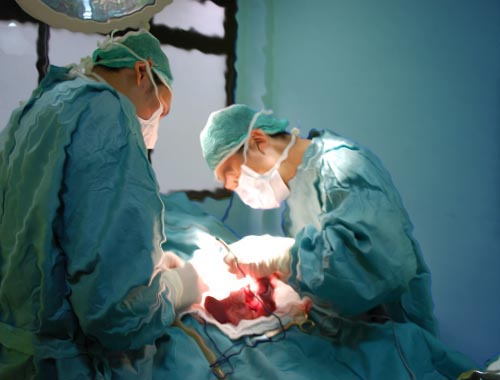Splenic, hepatic, or peritoneal Hematoma (Hematoma in abdomen)
Hematoma is generally defined as a collection of blood outside of blood vessels. Most commonly, hematomas are caused by an injury to the wall of a blood vessel, prompting blood to seep out of the blood vessel into the surrounding tissues. A hematoma can result from an injury to any type of blood vessel (artery, vein, or small capillary). A hematoma usually describes bleeding which has more or less clotted, whereas a hemorrhage signifies active, ongoing bleeding. Hematoma is a very common problem encountered by many people at some time in their lives. Hematomas can be seen under the skin or nails as purplish bruises of different sizes. Skin bruises can also be called contusions. Hematomas can also happen deep inside the body where they may not be visible. Sometimes hematomas are named based on their location. Intra-abdominal, peritoneal, or retroperitoneal hematoma: a hematmoa inside the abdominal cavity; Ear or aural hematoma: a hematoma between the ear cartilage and overlying skin; Splenic hematoma: a hematoma within the spleen; Hepatic hematoma: a hematoma within the liver; A retroperitoneal hematoma is a pocket of blood found in the lower back in an area known as the retroperitoneal space. A hematoma forms when blood collects within an enclosed place, such as the soft tissues found among organs and their supporting membranes. The peritoneal cavity is the space that is formed between two types of membranes surrounding the organs of the abdomen and the pelvis. The retroperitoneal cavity is the area found behind the peritoneum. The organs of the retroperitoneal space include those that are found in the lower back that are not supported by the peritoneal lining. These include the pancreas, the kidneys and adrenal glands, and the duodenum of the small intestine. The area also includes vessels, such as the aorta and the inferior vena cava. A retroperitoneal hematoma is most commonly caused by a traumatic impact to the body or an injury caused by an object penetrating the abdominal or pelvic cavities. The internal bleeding that occurs with these types of injuries collects to form a hematoma. The great vessels of the vena cava and the aorta, as well as the vessels that support the retroperitoneal organs, can be injured to cause the initial bleeding.
